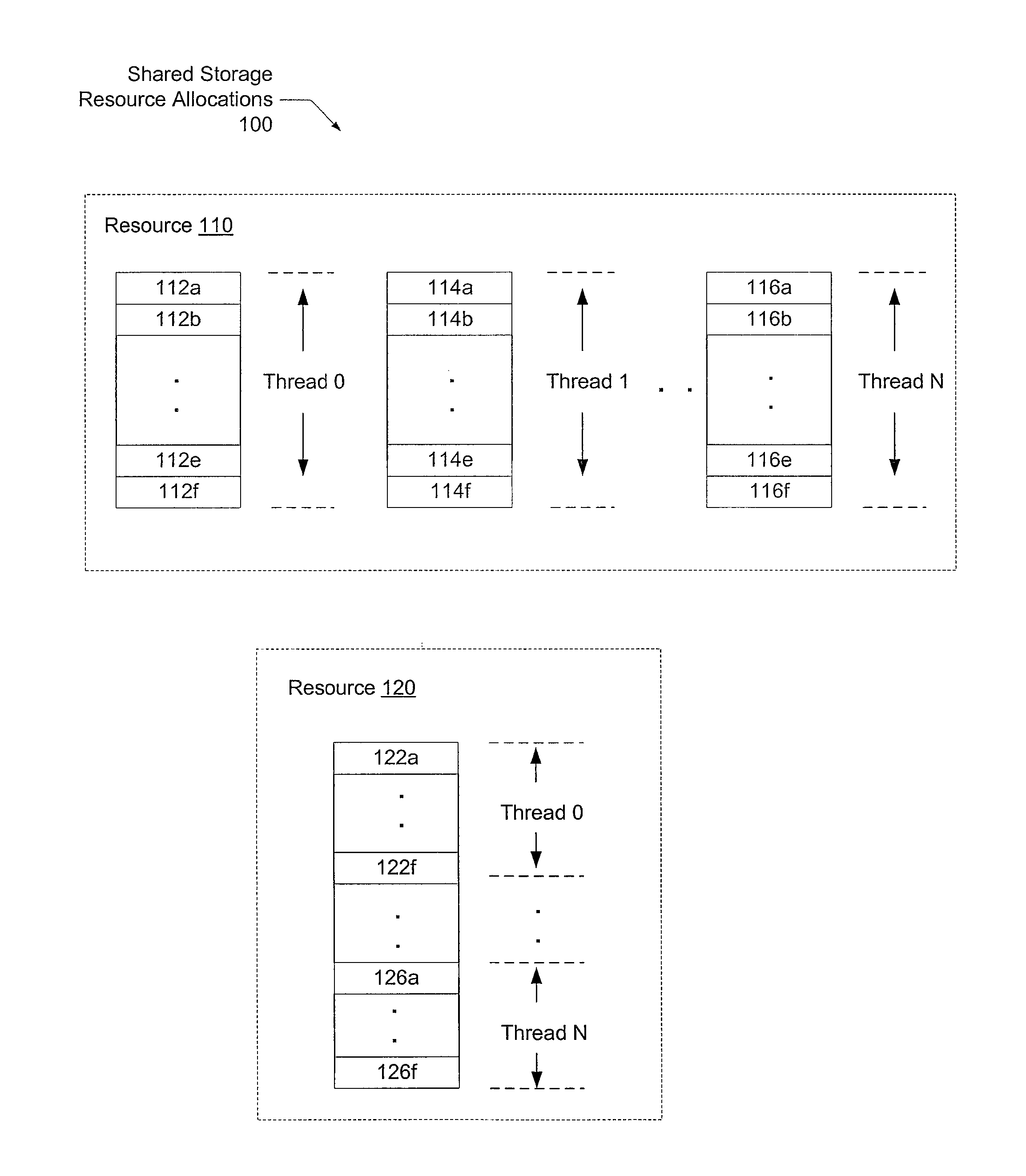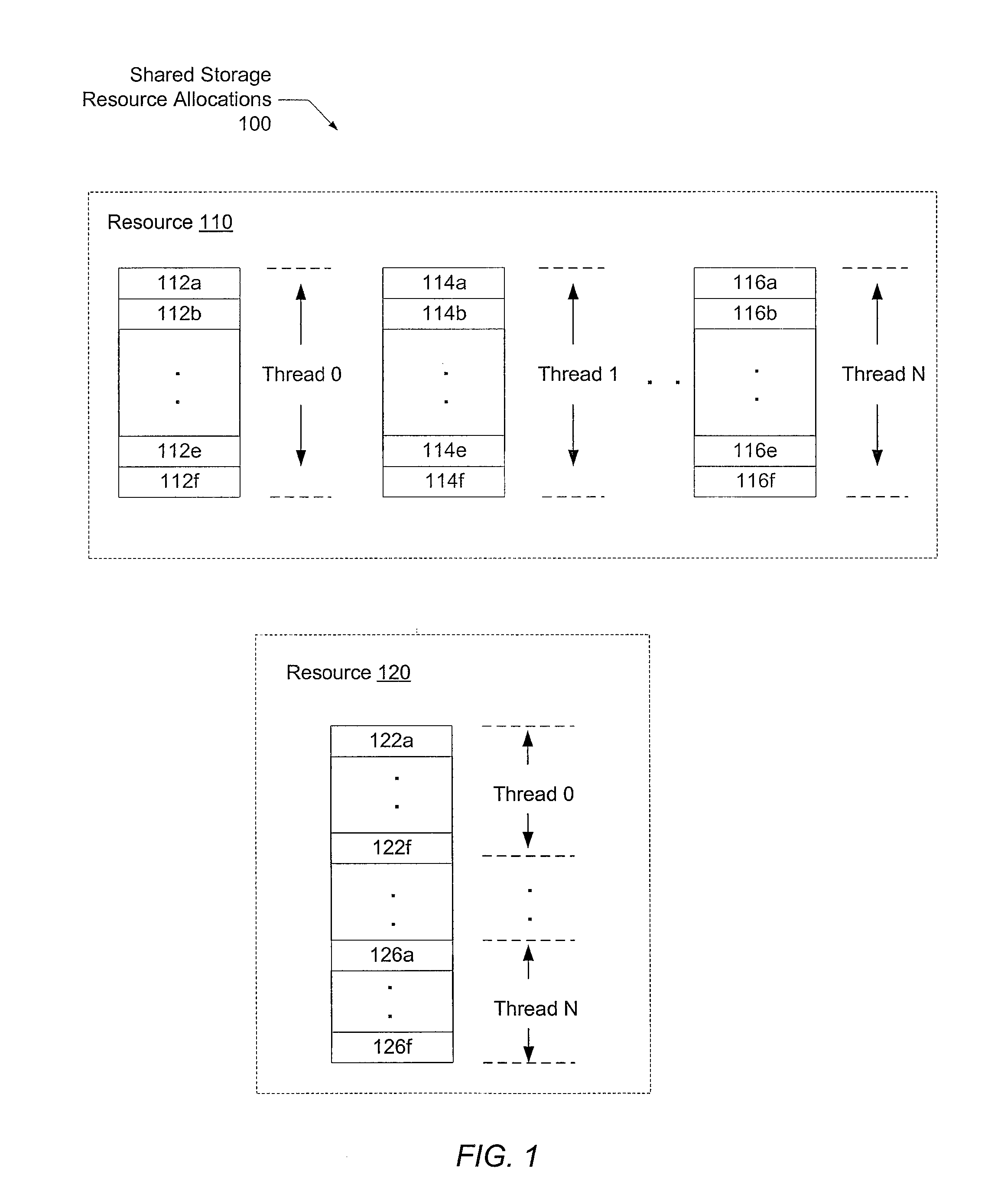Dynamic allocation of resources in a threaded, heterogeneous processor
a heterogeneous, threaded technology, applied in the field of computing systems, can solve the problems of increasing microarchitectural complexity, many resources are unused in each pipe stage, and resources dedicated for use by other threads may go unused, so as to achieve efficient dynamic utilization of shared resources in the processor, increase the utilization of all other resources, and provide peak performance
- Summary
- Abstract
- Description
- Claims
- Application Information
AI Technical Summary
Benefits of technology
Problems solved by technology
Method used
Image
Examples
Embodiment Construction
[0027]In the following description, numerous specific details are set forth to provide a thorough understanding of the present invention. However, one having ordinary skill in the art should recognize that the invention may be practiced without these specific details. In some instances, well-known circuits, structures, signals, computer program instruction, and techniques have not been shown in detail to avoid obscuring the present invention.
[0028]Referring to FIG. 1, one embodiment of shared storage resource allocations 100 is shown. In one embodiment, resource 110 corresponds to a queue used for data storage on a processor core, such as a reorder buffer, a branch prediction data array, a pick queue, or other. Resource 110 may comprise a plurality of entries 112a-112f, 114a-114f, and 116a-116f. As used herein, elements referred to by a reference numeral followed by a letter may be collectively referred to by the numeral alone. For example, entries 112a-112f may be collectively refe...
PUM
 Login to View More
Login to View More Abstract
Description
Claims
Application Information
 Login to View More
Login to View More - R&D
- Intellectual Property
- Life Sciences
- Materials
- Tech Scout
- Unparalleled Data Quality
- Higher Quality Content
- 60% Fewer Hallucinations
Browse by: Latest US Patents, China's latest patents, Technical Efficacy Thesaurus, Application Domain, Technology Topic, Popular Technical Reports.
© 2025 PatSnap. All rights reserved.Legal|Privacy policy|Modern Slavery Act Transparency Statement|Sitemap|About US| Contact US: help@patsnap.com



